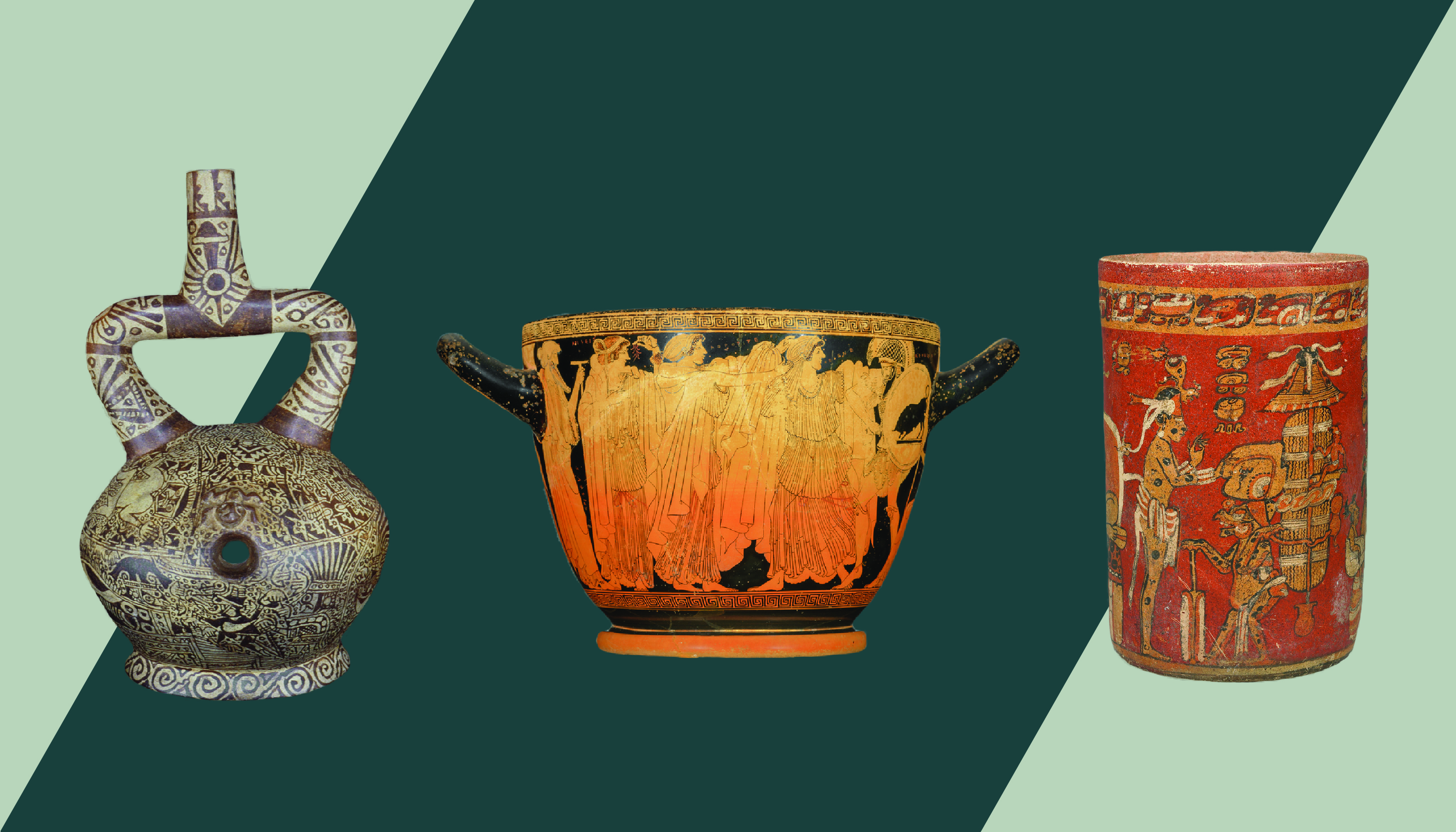
Left: Stirrup-Spout Vessel with the Burial Theme, 650–800 CE, Moche, probably made in San José de Moro, Peru. Fowler Museum at UCLA, Gift of Mr. and Mrs. Herbert L. Lucas, Jr., X88.801. Center: Drinking Vessel with the Departure and Recovery of Helen, around 490 BCE, Greek, made in Athens. Museum of Fine Arts, Boston, Frances Bartlett Donation of 1912, 13.186. Right: Cylinder Vessel with the Maize God and other Supernaturals, 600-700 CE, Maya, probably made in El Zotz, Guatemala. Princeton University Art Museum, Gift of Stephanie H. Bernheim and Leonard H. Bernheim, Jr. in honor of Gillett G. Griffin, 2005-127
Stories on Ceramics: Time, Transformation, and Touch
ONLINE ONLY
This is a past event
The exhibition Picture Worlds: Greek, Maya, and Moche Pottery brings together painted terracotta vessels from three distinct cultures. To explore what we can learn from seeing them side-by-side, three experts each select an example for close looking. Together, they address time, transformation, and touch in the depiction of mythical tales, and the powerful role these painted vessels play in the sharing of stories.
The exhibition is on view at the Getty Villa Museum through July 29, 2024. An accompanying publication is available for purchase.
SPEAKERS
Megan E. O’Neil is assistant professor of art history at Emory University, specializing in ancient Maya sculpture, painting, ceramics, and material culture, particularly addressing touch, materiality, reception, and collecting histories. Her most recent book, part of Reaktion Books's Lost Civilizations series, spins public discourse on its head by arguing that Maya civilization was never lost, narrating and analyzing how people have engaged with the ancient Maya over the past 500 years.
Guy Hedreen is Amos Lawrence Professor of Art at Williams College, specializing in Greek pottery. He is interested in the influence of religion, poetry, narrative, and social history on Greek art, particularly vase painting. He explores the nuanced relationship between pictorial narratives and the ancient literature, between the image and the written word. He has been awarded with several honors, such as the Guggenheim fellowship, Rome Prize fellowship, NEH fellowship, and Clark fellowship. His recent research delves into the relationships between Dionysus, satyrs, sexuality, and gender.
Julio Rucabado is the curator of pre-Columbian art at the Museo de Arte de Lima in Peru. He is interested in Moche iconography, power, and politics in ancient Peru, particularly transformations and transitions. He has worked as a research associate of the San Jose de Moro Archaeological Project, where his research focused on the collapse and reorganization of the societies of Jequetepeque during the Transitional Period. He also investigated connections between the Moche and other societies, as well as the relationship/interconnectivity between the coastal and mountain regions of the Moche state.